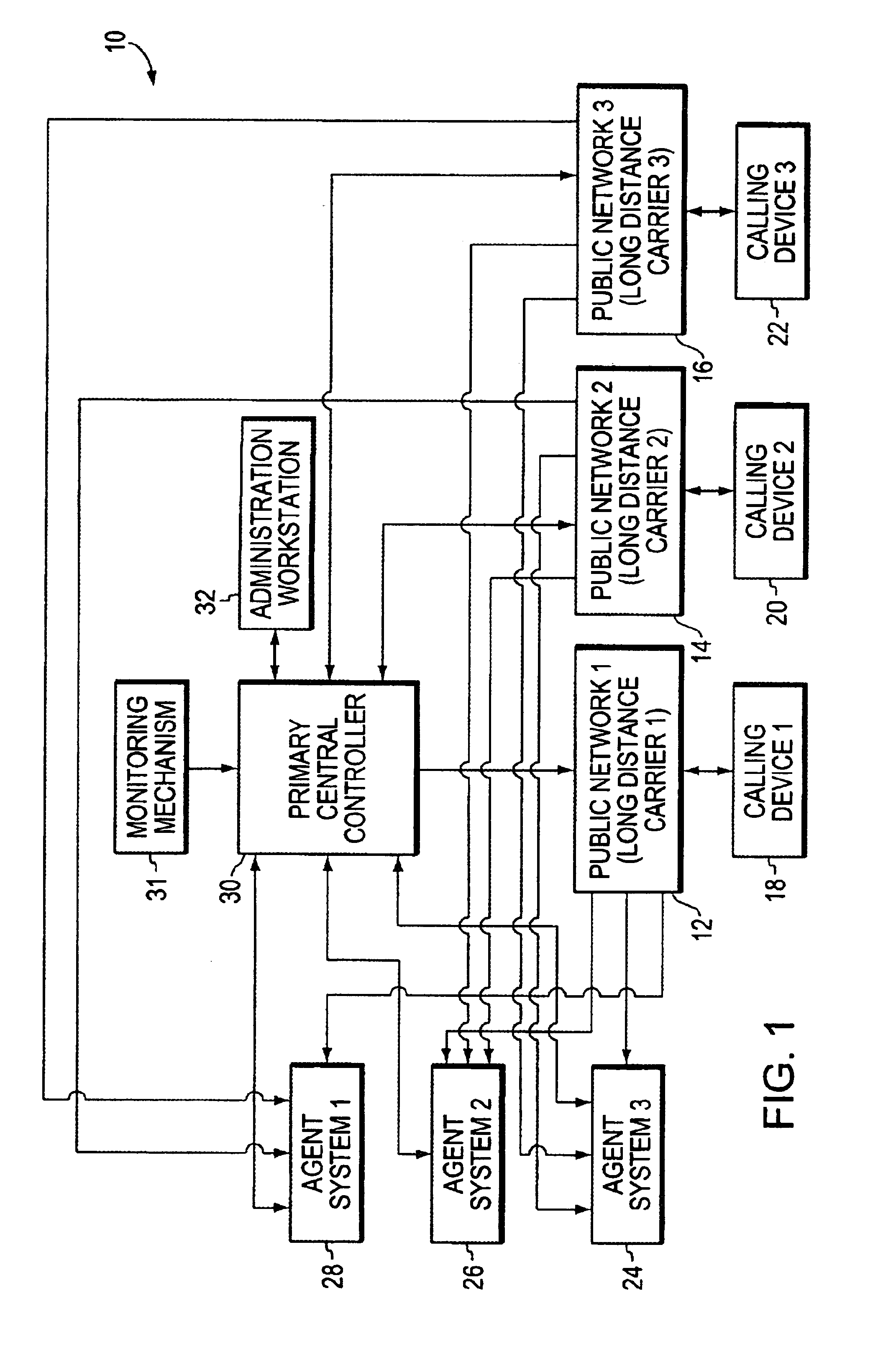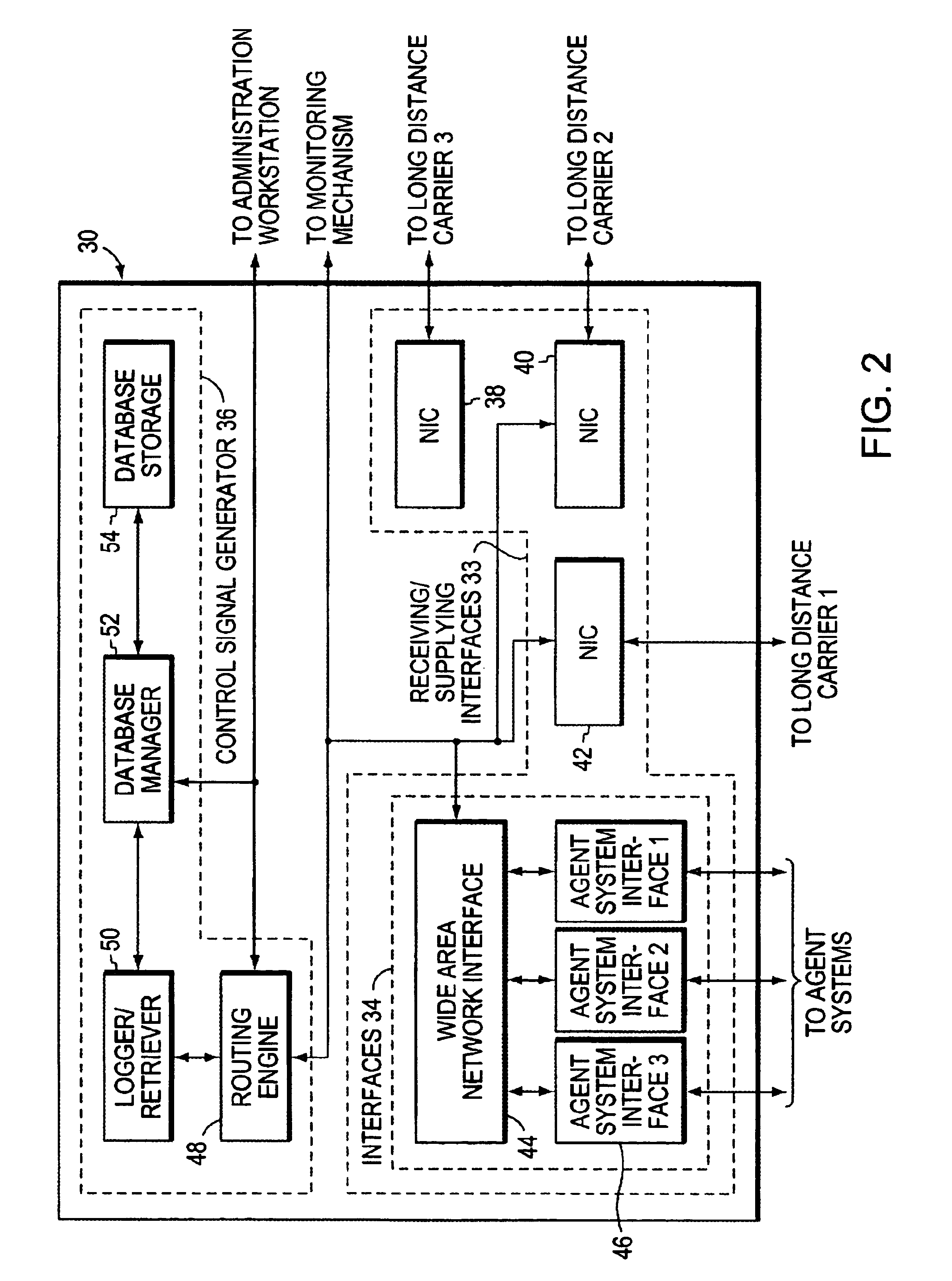Call management implemented using call routing engine
a call management and routing engine technology, applied in the field of call management using a routing engine, can solve the problems of real-time call management and reporting capabilities, reduce the efficiency and utility of the communication system, and no mechanism is provided to permit the implementation of a truly global technology, so as to achieve less complexity, less cost, and more efficient
- Summary
- Abstract
- Description
- Claims
- Application Information
AI Technical Summary
Benefits of technology
Problems solved by technology
Method used
Image
Examples
Embodiment Construction
[0034]FIG. 1 is an architectural-level block diagram illustrating functional components of a communications system 10 wherein the present invention may be practiced. System includes a plurality of agent systems 24, 26, 28 connected to a primary central controller 30 and a plurality of public telephone and / or long distance carrier networks (e.g., British Telecom, Energis, France Telecom, Cable and Wireless, MCI, Sprint, AT&T) 12, 14, 16. Calling devices 18, 20, 22 place calls to called devices (i.e., agent systems 24, 26, 28) via public networks 12, 14, 16. As will be explained more fully below, primary central controller 30 generates command messages for controlling routing and distribution of calls through the long distance carriers to and from the agent systems, and through the agent systems themselves to and from individual workgroups, agents and / or caller services, based upon requested service messages (e.g., telephone numbers and / or other information and messages supplied from ...
PUM
 Login to View More
Login to View More Abstract
Description
Claims
Application Information
 Login to View More
Login to View More - R&D
- Intellectual Property
- Life Sciences
- Materials
- Tech Scout
- Unparalleled Data Quality
- Higher Quality Content
- 60% Fewer Hallucinations
Browse by: Latest US Patents, China's latest patents, Technical Efficacy Thesaurus, Application Domain, Technology Topic, Popular Technical Reports.
© 2025 PatSnap. All rights reserved.Legal|Privacy policy|Modern Slavery Act Transparency Statement|Sitemap|About US| Contact US: help@patsnap.com



